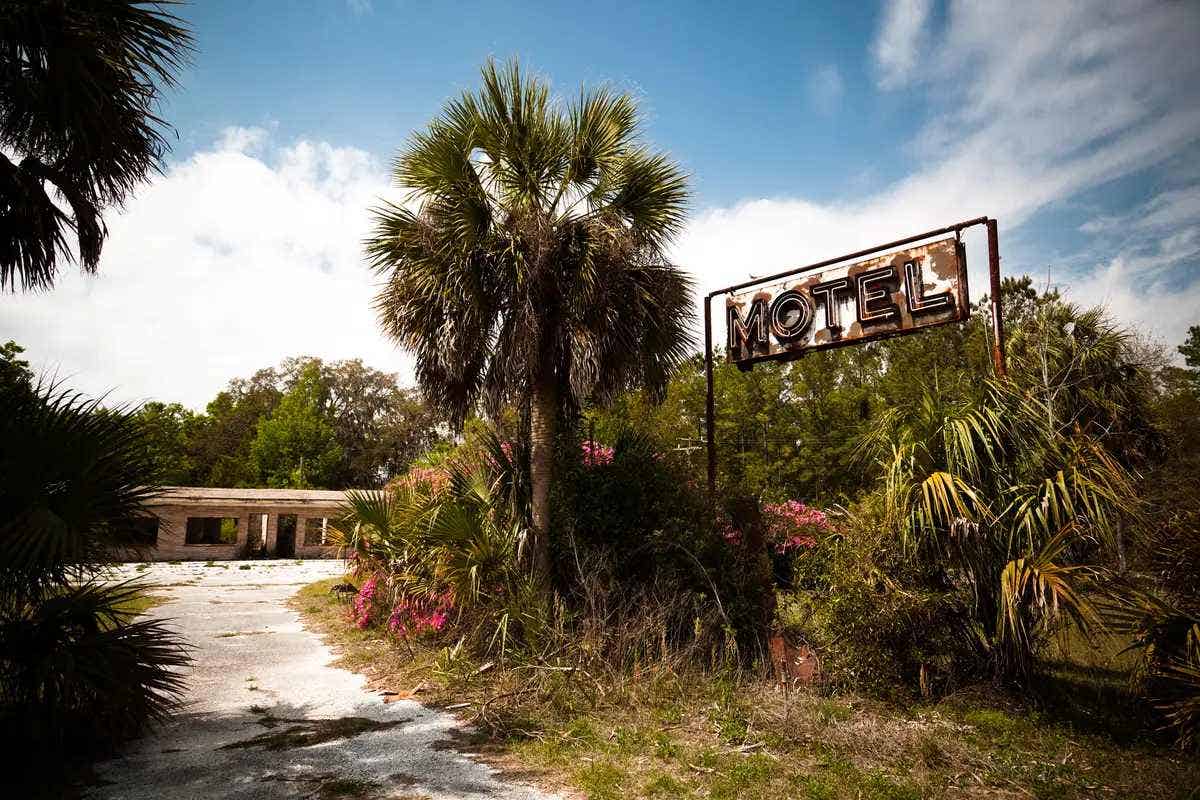Looking for the perfect Halloween adventure? Take a trip to some of the eeriest abandoned towns in the Sunshine State. These Florida ghost towns are filled with history and intrigue – and probably a few spirits, too. Enter if you dare!
1. Anona in Pinellas County
While the town established by Captain John Thomas Lowe disappeared into nearby Largo, you can still visit several remaining structures. These include a still-active church and the cemetery where many of its original settlers are buried.
A short drive takes you to Heritage Village where you can tour the Lowe House, a classic example of a homestead house. This simple and efficient type of home was popular in the late 19th and early 20th century and can usually be identified by its gabled roof and batten siding.
2. Slavia in Seminole County
Slavia was established by Slovakian immigrants who banded together to purchase a plot of land and move their children away from the temptations found in large cities. The hard work of turning wet woodlands into successful farms drove many of the new settlers away, but those who stayed were able to create the community they sought.
Today, no residents live in Slavia, but you can visit its oldest remaining building: St. Luke’s Lutheran Church. Built in 1912, the church building was originally a worker shack. This structure has been renovated several times and still sits at the edge of Slavia’s cemetery.
3. Zion in Palm Beach County
Zion is probably best known for being the site of one of Florida’s Houses of Refuge. Beginning in 1870, these houses were essentially life-saving stations for sailors shipwrecked along Florida’s mainly barren eastern coast. Zion’s Orange Grove House of Refuge #3 was in service for 20 years. The government rented the building to new settlers until 1927 when the structure was destroyed in a fire.
Zion may also be one of the few Florida ghost towns with the potential for actual ghost sightings. Orange Grove House of Refuge #3 is also where barefoot mailman James “Ed” Hamilton stayed the night before he disappeared near the Hillsboro Inlet.
4. Holopaw in Osceola County
In 1928, JM Griffin Lumber Company bought a plot of land near the Florida East Coast Railway Kissimmee Valley extension and opened a sawmill. Next came housing, which the company leased to its employees and ultimately became the town of Holopaw, a Creek word that means “walkway” or “pavement.”
The town thrived with the lumber industry, hitting a population of 2,000 at its peak. But then the timber ran out, the railroad discontinued service, and Holopaw dwindled into a ghost town. It’s remained that way since the Great Depression.
5. Olympia in Martin County
Olympia may be the only Florida city that has never been anything but a ghost town. It was the grand idea of a banker who hoped to build a Greek-inspired second Hollywood during Florida’s real estate boom of the 1920s.
Unfortunately, his timing was terrible. The boom went bust just a few years after architect Maurice Fatio began working on the project, followed by a hurricane in 1928. The remnants of this Florida ghost town are mainly found in streets named for Greek and Roman gods throughout Old Hobe Sound.
6. Fort Dade in Hillsborough County
Fort Dade was built in 1899 on Egmont Key to defend the Tampa Bay area during the Spanish-American War. But even before that, the stretch of land was home to a lighthouse, a series of military outposts, and an internment camp for Seminole prisoners. The city had over 300 residents at one time, plus a hospital, jail, bowling alley, and more. Now people can explore four abandoned fort structures by taking a ferry or boat to Egmont Key.
7. Okeelanta in Palm Beach County
Okeelanta was founded in 1913 with the intention of converting the Everglades into usable farmlands. After some initial struggle farming in wetlands, the original settlers were successful with a variety of crops, including sugarcane, corn, beans, and tomatoes, and the town grew.
However, Okeelanta’s 200 residents routinely battled floods and freezes, and the town’s population began to move away. Okeelanta was ultimately destroyed in 1928 by a hurricane. City founder Thomas Will attempted to rebuild but failed to get financing and Okeelanta ultimately disappeared.
8. Kerr City in Marion County
Kerr City was founded in 1884 as a stagecoach stop for travelers commuting from the St. Johns River to Ocala. The town had 100 people at one point, as well as a hotel, general store, drug store, school, church, and post office.
After the Great Freeze killed all the citrus plants in 1894 and 1895, most people moved away. The hotel burned down in 1907, while the post office operated until 1941 and is still standing. Many of the old homes have been renovated in recent years and are on the National Register of Historic Places. Currently, the town is fenced off and visits by the general public aren’t allowed.
9. Hopewell in Hillsborough County
Hopewell (originally named Callsville) was founded as a plantation shortly before the Civil War. When the slaves were freed, the plantation was divided into smaller homesteads. Eventually, the town was abandoned - but no one seems to know why.
Now it’s surrounded by citrus groves and the only buildings that remain are the church and cemetery, McDonald House, and the Hull House. Most of the town’s buildings have been overtaken by trees and vines, but some of the homes are still in decent shape for curious visitors.
Were these abandoned places a little too tame for your taste? Then check out these four haunted house stories if you’re feeling brave.


